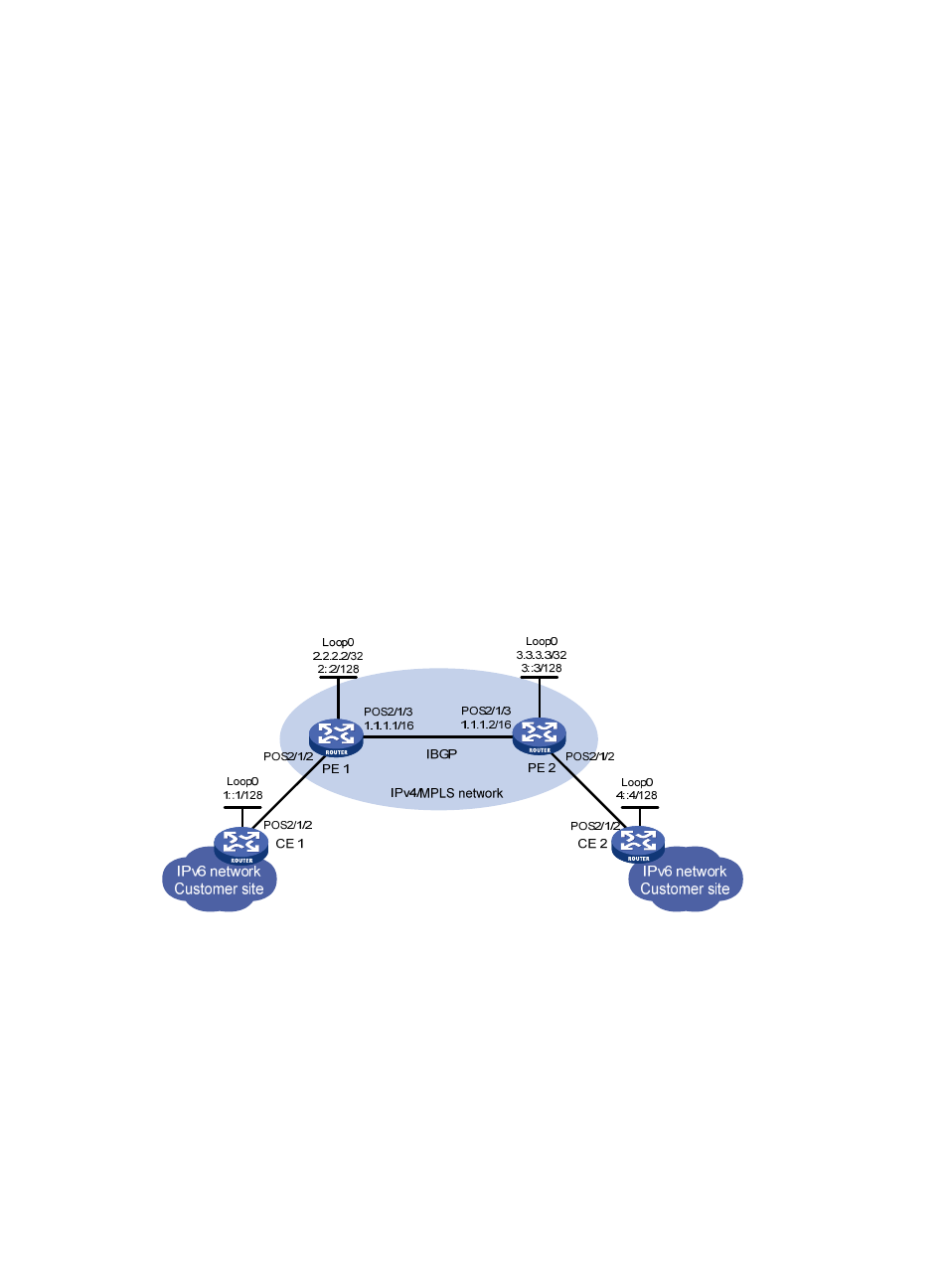6pe configuration, Network requirements, Configuration procedure – H3C Technologies H3C SR8800 User Manual
Page 387

371
[RouterD-bgp-af-ipv6] peer 102::1 as-number 200
3.
Configure route reflector:
# Configure Router C as a route reflector, Router B and Router D as its clients.
[RouterC-bgp-af-ipv6] peer 101::2 reflect-client
[RouterC-bgp-af-ipv6] peer 102::2 reflect-client
4.
Verify the configuration:
Use the display bgp ipv6 routing-table command on Router B and Router D respectively, you can
find both of them have learned the network 1::/64.
6PE configuration
Network requirements
As shown in the following figure:
•
Routers PE 1 and PE 2 support 6PE;
•
Routers CE 1 and CE 2 support IPv6;
•
Between the PE routers is the IPv4/MPLS network of an ISP. The two PEs establish an IPv4 IBGP
connection in between, and the IGP used is OSPF.
•
The CEs reside in IPv6 networks. A CE and a PE use IPv6 link-local addresses to exchange routing
information via a static route;
•
Connect the two IPv6 networks through the IPv4/MPLS network with the 6PE feature.
Figure 120 Network diagram
Configuration procedure
1.
Configure CE 1:
# Enable IPv6 packet forwarding.
<CE1> system-view
[CE1] ipv6
# Specify IP addresses for interfaces.
[CE1] interface Pos 2/1/2
[CE1-Pos2/1/2] ipv6 address auto link-local
[CE1-Pos2/1/2] quit
[CE1] interface loopback0